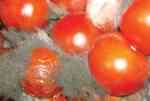Step 1 of 6•7 minutes read
Microbiological Hazards
Below are your keywords for this section of your training. These words you will use during your work and will appear in the final exam so be sure you learn them.

In food safety understanding microbiological hazards, and how they survive and multiply is the best way to know how to control them. Bacteria: (sometimes called germs) are all around us. In our mouths, nose, ears and on our hands. They are found in some of the foods we eat and on the packaging, they come in. Bacteria are very small and can be only seen under a microscope. This is why understanding more about bacteria is important for you as a food handler.
Some bacteria are not harmful in fact we call them friendly bacteria. Friendly bacteria are good for us and essential to being healthy. These friendly bacteria are used to make yoghurt and cheese for example.
The bacteria that make us ill are called pathogens. Pathogenic bacteria are harmful to humans as they produce toxins or poisons. These are the bacteria that pose a hazard to the safety of food.
Sometimes is obvious that food has been contaminated by bacteria. For example, packaged food that has been contaminated like cans and cartons with "Blow" or "distort". This is because as the bacteria multiply they produce gas. Otherwise, it is impossible to know that the food is contaminated and potentially unsafe. Therefore preventing contamination in the first place is the only way to operate to make sure all food is safe.
Here are some key facts about bacteria:
- You can not see them (unless under a microscope).
- You can not taste them.
- You can not smell them.
- You generally need to eat a lot of them to make you sick.
- They grow and multiply in food.
You may be familiar with mould and fungi. Often seen on food as blue/green fur. Mould is a type of bacteria called spoilage bacteria as they spoil food or make it "go off". Unlike pathogenic bacteria most mould and fungi are harmless but they are not very pleasant to eat. It's your responsibility to report all signs of food spoilage to a supervisor/HOD and ensure that it is disposed of safely.
Here are some key facts about mould & fungi:
- They spoil food making it go slimy or green.
- They can make food smell unpleasant.
- You can see them.
- They do not normally make you sick they just taste terrible. In fact, you would not attempt to eat them as they look very unappealing.

Mould on tomatoes.
Another type of microbiological hazard that you can not see but are a problem for food safety is viruses. You are probably more aware of viruses since the COVID pandemic. Viruses had always been prevalent in food safety, for example, norovirus is easily transmitted in food causing sickness and diarrhoea. They are many viruses and we will be covering this later in your training. The main difference between bacteria and a virus is that viruses are generally passed from person to person and they multiply in the human body. They actually do not need food to survive as they can remain active on surfaces and door handles. But they can be transmitted on food and on the utensils/equipment used for service for example cutlery, service equipment on buffets and dining tabletops.
Here are some key facts about a virus:
- They are smaller than bacteria.
- You can not see them.
- You can not smell them.
- You can not taste them.
- They multiply in the body, not in the food.
- They survive on surfaces and hands.
- Normally transmitted from person to person through poor hygienic practices.
- It only takes a small number to make you sick (a lot less than bacteria).
- Some viruses can be in the food we eat for example mussels and clams as they grew in contaminated water. Good suppliers are very important for peace of mind.
Then we have parasites that are another type of micro-organism. Parasites are organisms that take nourishment and protection from other living organisms known as hosts. This can be animal meat we are eating. When found in food, they can cause diseases in humans.
Here are some key facts about parasites:
- They are organisms that derive nourishment and protection from other living organisms (you and the food you eat). This means they can live inside you.
- You can see them.
- They can often look like worms or tiny eggs.
- Buying food only from good suppliers is good practice.
Watch this video to learn more about the ideal conditions to support bacterial growth. There are 4 things that you need to remember from this video.
THE SNEEZE! Great video on how germs are spread!